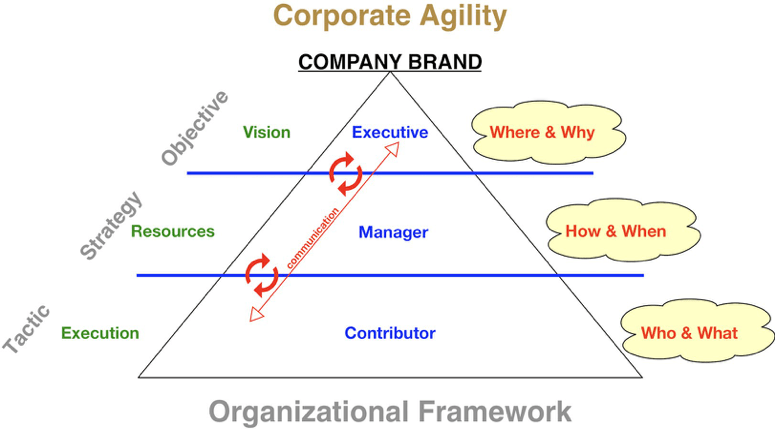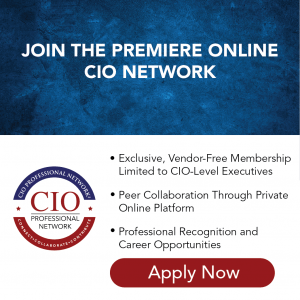In this third segment describing my Decision Making Landscape, I will walk through what I believe to be a very effective way to structure Corporate Agility. Even though this approach hasn’t been around for centuries, I will explain why I consider it a truism and why it is such an important element of my decision-making process.

My early experience at Texas Instruments was so invigorating and positive that it made me a bit naive to how resistant to change a company can become over time. It also demonstrated that an organizational structure could debilitate the company’s agility. A former business associate of mine used to say, “Boy, we have a way of complicating a one-car parade.” Unfortunately, sometimes simplicity isn’t possible, and when it comes to large organizations, there’s nothing simple about multiple organizational levels, hierarchies of responsibility, compensation policies, and benefit structures. Texas Instruments wasn’t different in that regard, it also had formal and complex organizational strata since it was a large, multinational company. But, Texas Instruments’ secret weapon was their culture of innovation, a culture that collectively had a way of throwing overboard anything that wasn’t critical to accomplishing their objectives, strategies, and tactics.
Organizational Strata
This culture exposed what I saw as an incredibly simplistic and unwritten organizational structure. There were Executives, Managers, and Contributors. Yes, there was a multitude of strata within each of these basic levels, but this company didn’t have time for titles. Daily, I saw the three-level structure overshadow the more complicated multi-strata organizational structure. The photograph below is a fantastic example of how the three-level organizing approach was natural for people at Texas Instruments.

Clearly, this is a staged publicity photo, but the photographer captured the unwritten executive, manager, contributor strata. Was this planned or accidental? Who knows, but the executive on the left side of the photograph is Jack Kilby, who in 1958 invented the integrated circuit, which changed the world. The man on the right is a manager and the engineer at the microscope is the contributor. Notice that the executive and manager are showing deference to the contributor since contributors are responsible for the vast majority of innovation at Texas Instruments. It seemed to me that along the way, the six questions we all learned in grade school: who, what, why, when, where, and how, were organically assigned to each level. This created a “divide and conquer” approach to overcome anything that would get in the way of the company’s progress.
Hierarchy of Corporate Strata
When the responsibilities of a particular level are linked with the other levels in a collaborative fashion, the organization takes on an agile posture. Individual responsibilities are critical, but within this functional hierarchy they take on even more importance. The graphic below depicts this very basic hierarchy of corporate strata.

The Executive level focuses on where the company is going and, most importantly, why that’s the goal. This level provides a clear Vision and establishes company Objectives. The Manager level focuses on how and when the job is going to get done. This level ensures company Resources are properly utilized and establishes Strategies in support of company Objectives. The Contributor level determines who does what. This level consists of the engineers, assembly line workers, quality control supervisors, etc., that are responsible for the Execution of the various Tactics that support company Strategies. The Contributor level is considered to be the most critical level because they actually make and ship the product out the door.
Innovative Culture
The Corporate Agility at Texas Instruments was underpinned and fueled by their culture of innovation, a culture that was deeply rooted and nurtured by senior leadership for over half a century. In the September 1979 issue of Institute of Electrical and Electronics Engineers magazine, Mark Shepherd, Jr., Chairman and CEO, and J. Fred Bucy, President and COO, of Texas Instruments authored an article titled “Innovation at Texas Instruments”. I have read this article over and over, and I’m still shocked today by how forward-thinking these leaders were. I’ve included an excerpt from that article below. It showcases how dedicated the company’s leadership was to drive innovation and how that dedication permeated the company’s culture.

To achieve our basic goals, many of our strategies center on continually improving our productivity, and the things we do to stimulate productivity may in turn serve to stimulate innovation. But fine-tuning existing technologies and the way we do business yields only grudging gains. The major gains that we strive to achieve in productivity, as well as in new products and services, result only from innovation. Since absolute productivity depends upon the performance of TI as a whole, we stress innovation not only in scientific and technical areas, but also in marketing, in personnel relations, and all other areas of the corporation. To achieve the performance and productivity gains needed, concise goals so challenging as to virtually “shock” the organization must be developed and communicated to everyone. And all Tiers must consider themselves members of the team–personally committed to achieving these formidable goals.
I often thought back on their culture of innovation for guidance, especially in how they organized and operated as a company, not to mention the positive way they treated their people. Corporate Agility may seem like a new concept but, throughout my career, it has always been something I rely on as a truism, and it earned a prominent spot on my Decision Making Landscape.
Over the next few weeks, Segments 4 will dig deeper into the composition of the last truism, Customer Lifestyle. More importantly, I will explain how it has also stood the test of time.
Check out the previous segments of the Decision Making Landscape below:
I. Technology Isn’t Everything
II. Productivity







